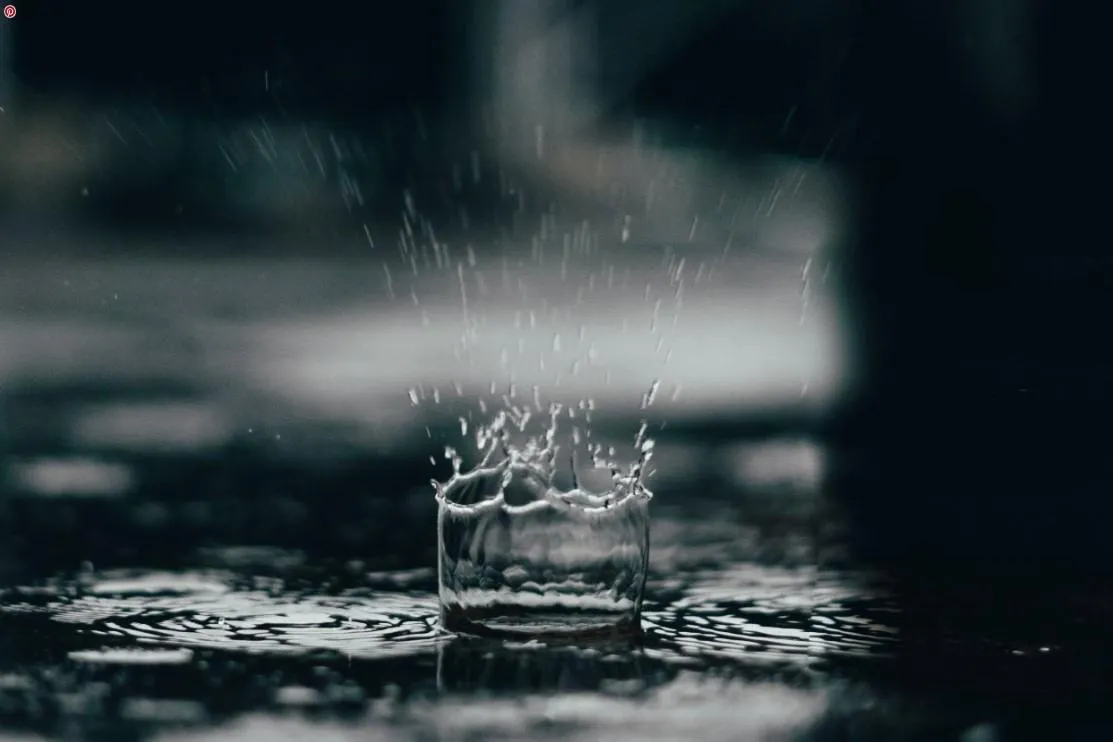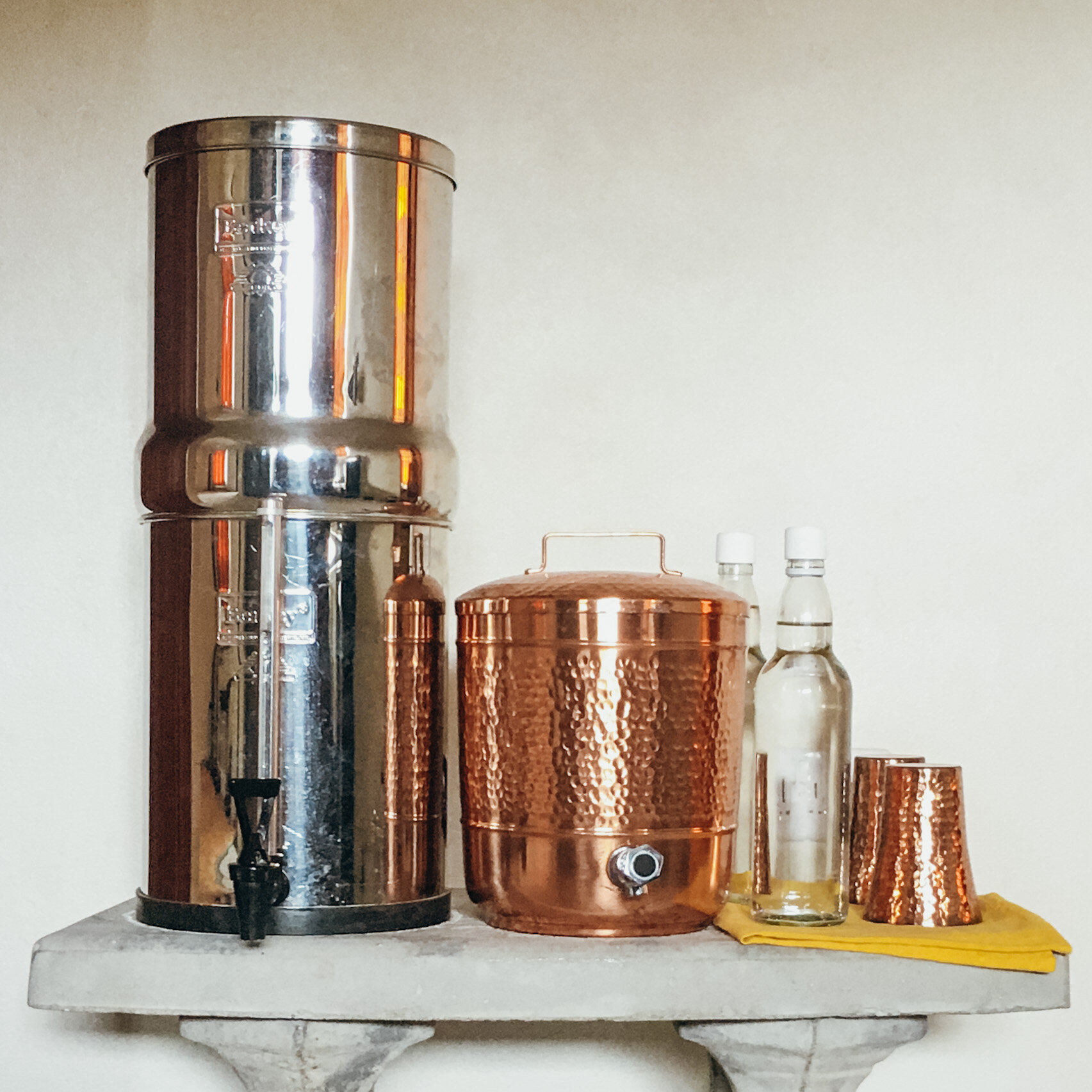
Water Has More Impact On Your Health Than Food
Water can support and promote health and vitality, and it can also have extremely negative consequences on our systems. Here is our guide, based on practices that we have been doing for 10 years, that have produced obvious results for our health.
Summary:
Water shouldn’t be consumed straight from the tap.
Drinking liquid in extreme temperatures of hot and cold is not conducive for health and wellbeing.
Avoid taking small ‘sips’ of water consistently throughout the day.
Avoid drinking amidst physical activity.
Drink water when you are thirsty only.
Eat foods that are a minimum 70% water content.
Take care of your water and it will take care of you.
The Quality Of The Water You Drink Is More Important Than The Quality Of The Food You Eat.
Out of all physical matter, we are mostly water. Our bodies are more water than we are cells, bacteria, and space. There is much more social focus on food, and how food nourishes the body - but food only makes up 12% of the human body. Water represents more than 70% of who we are. And yet, almost no one is aware that so many variables impact and change how water will act in the human system.
Yogic sciences have known for thousands of years that the molecular structure of water is far more complex than modern science recognizes today. It has a tremendous amount of memory, and can change form even based on thought or emotion of someone nearby. How we treat water we’re about to drink, therefore has enormous impact on how the water behaves in the body. More about this here: The Right Way to Drink Water (Video)
Excessive Consumption Of Water
Drinking too much water can damage the system. Drinking in small sips throughout the day will lead you to taking in more water than necessary, because the body naturally absorbs more water than it normally would when a sufficient quantity of water is consumed at one time.
The sodium levels in the body are very delicately balanced. When you drink too much water, sodium levels, particularly in the brain, will drop, leading to swelling of the brain. This swelling happens because the body will notice the sodium levels dropping and then send water to the brain to try to re-balance sodium levels (flashback: secondary school biology and osmosis). So you will end up with more water in your brain, which has many negative consequences. Even a slight swelling of the brain will do many things, including instigate psychological imbalance.
Not Enough Water
Drinking not enough water has very serious consequences. If you aren’t thirsty, no need to drink. But if you are thirsty, drink enough plus 10% more.
If you don’t drink when you need water, it will cause damage to the system, especially the heart. According to Sadhguru, 50% of heart attacks in the world would come down if people drank good quality water in sufficient quantity.
When there is an indication of thirst, you must have a substantial quantity of water within 20-30 minutes. Then, the body will choose how much to use and how much to expel.
More: How Much Water Should I Drink Every Day? (Video)
Our Water Setup
In our home, our water system looks like this. We use the Big Berkey with fluoride filters, and also a copper storage pot. We use copper tumblers for drinking our water first thing in the morning when we take neem and turmeric balls. We go through a lot of water (drinking and also cooking on a daily basis), so this is the most suitable based on our rate of consumption.

How To Store Water
Whatever you do, do not drink water straight from the tap. It needs to sit and become still in order to behave well in your system. Here are some tips on how to store water so it is most compatible with your body.
It should sit still for at least 20 minutes before you drink it.
For storage longer than 20 minutes, it is best in a closed copper vessel. See below on “Water and Copper”. If copper is not available, a ceramic or opaque glass vessel is idea.
It should be in an area that is as undisturbed as possible. You could look at it like this: treat your water area like you would where a baby is lying down. Calm and peaceful as much as possible. Don’t keep it in a high-traffic area. It should have its own space.
If you are drinking from a treated water source, like municipal wells, there is likely a plethora of crap in your water. You can get a proper water filtration system to deal with this and purify your water before drinking. We recommend a Berkey System, but there are others like Santevia that will give you similar results. Note that cheap systems like Brita really do very little, and are mostly marketing hype.
I’ll be honest - in the last 10 years, we’ve made a lot of changes in our lifestyle for our health. Changing everything about our approach to storing water is in the top 3 things that have produced the most noticeable improvements to our health.
Even our dogs can tell a difference if we put tap water versus our water in front of them - they choose the looked-after water every single time (even during double blind testing! Really.).
Water And Copper
Water stored in copper plays a significant role in cleansing the body of toxins. Copper has amazing anti-bacterial properties. If you want to learn more about this, watch this video on storing water in copper vessels.
Water And Iron
It is worth mentioning that cooking with iron is one of the best ways to increase bioavailable iron in your body. Here are a couple of options for you:
Use iron cookware.
Alternatively, you can use the Lucky Iron Fish (made locally near us!).
The Ideal Conditions To Consume Water:
No ice.
To be most compatible with your system, the water you drink should be within 8 degrees up or down from your current body temperature. Temperatures outside of this range are not conducive for the human system, and will disturb the water already in your system in an unfavorable way.
Keep it still, and ideally in copper.
Like we said above, do not drink water straight from a tap. Let it sit for at least 20 minutes before consuming.
Drink what you need at once on at empty stomach, not little sips throughout the day.
When you are thirsty, the ideal amount of water to drink is whatever volume will sufficiently quench your thirst plus 10%. When you compare the physiological effects of drinking 2 cups of water at once compared to in small quantities over a few hours, there is a very significant difference between the two, despite the total volume of water being equal. When you take small sips constantly, the very precise electrolyte balancing mechanisms in the human system gets out of whack, and as a consequence sodium levels will drop.
Once sodium levels drop throughout the body, you will be inclined to drink more water because your body will be deceived into thinking it is dehydrated. So you will take in more water than you need. It is a self-perpetuating cycle. Luckily, it can be avoided by just drinking however much water you need to quench your thirst all at once on an empty stomach.
It should be noted that if you are not thirsty, you don’t need water. If you are a “believer” that you need to drink a certain amount of water per day, no matter what, then you’ve been sucked into the marketing black hole.
Ideally not during physical activity.
The system heats up when it goes through any kind of physical intensity, activity, or exertion. In a state of this kind of heat, liquid (or food) is not absorbed well in the stomach, and as well, its impact on the system as a whole will have negative consequences in most scenarios.
Drink water at least 20 minutes before or after any kind of activity. If you’re going to be playing a game or a sport, make sure you hydrate with water and water-rich foods earlier in the day or the night before. If you must drink something due to dehydration, it should be as minimal an amount as possible, and when you drink it, don’t just guzzle it down. Keep the water in your mouth for a few moments to fully hydrate the mouth and maximize absorption here first.
Don’t drink it if you aren’t thirsty.
If you think you must drink a certain amount of water per day no matter what, you’ve been sucked into the marketing black hole. Like food, how much water you need varies depending on your body’s current state.
Drinking liquid water is not the only way you need to hydrate. Equally, whatever food you eat should hydrate you. To hydrate you, it needs to be at least the same percentage of water that you are - about 70% water. So this is one reason why vegetables and fruits in a raw or lightly cooked state should be a part of your diet, or else your system will not be sufficiently balanced and hydrated.
Eat high water content foods.
You must eat high-water content foods. Fruit have almost 90% water. Vegetables are over 70%. If the food is less than 70% water content, it will only dehydrate the body.
Do not drink water on a full stomach.
Consuming any liquid while you are eating, or within 20-60 minutes after eating will negatively impact digestion by diluting digestive/gastric juices, which are essential to digestion. So, if you drink with food in your stomach, this is slowing down your digestion and also making it less effective. If you are thirsty, make sure you drink enough before eating - ideally 20 minutes before your first bite of food.
How do you care for your water? Tell us your experiences in the comments below.



Copyright © 2019-2025 Athletic Engineering Canada. All rights reserved.
